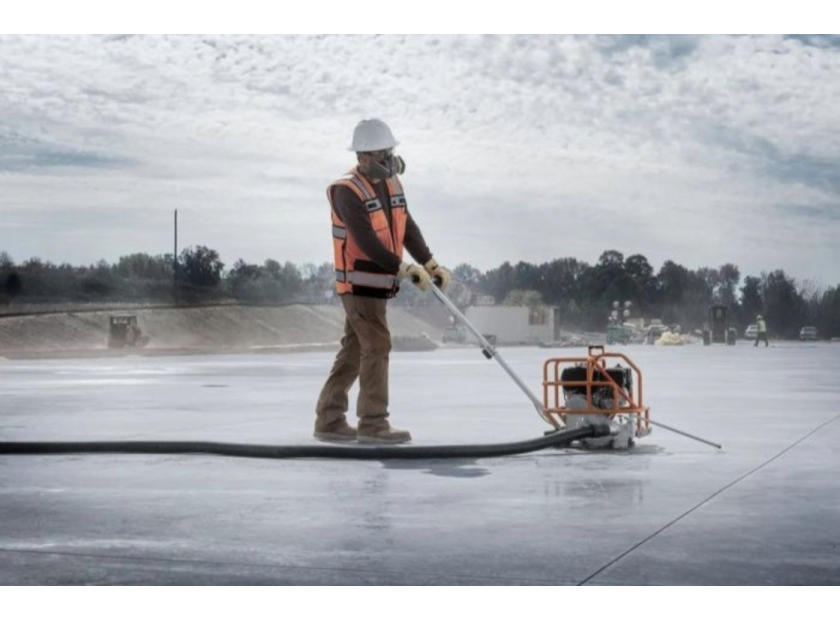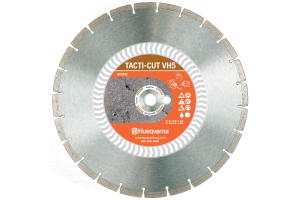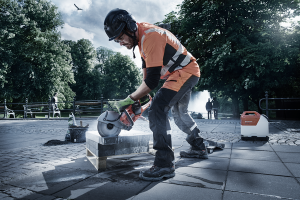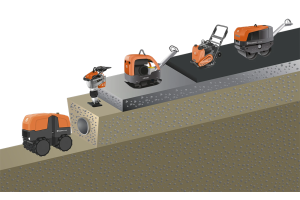Soff-Cut vs. Walk-Behind Saws: Which Is Best for Early Entry Concrete Cutting?
Early entry cutting is the process of sawing control joints into freshly placed concrete within just a few hours after finishing—typically before final set. The goal is to relieve internal stresses and prevent random cracking. This method is increasingly common on commercial slabs, warehouses, tilt-up panels, and DOT projects because it allows the joint to form where you want it, not where the concrete decides to crack. Getting the timing right requires both the proper saw and blade for the job.
Soff-Cut Saws – Designed for the First Cuts
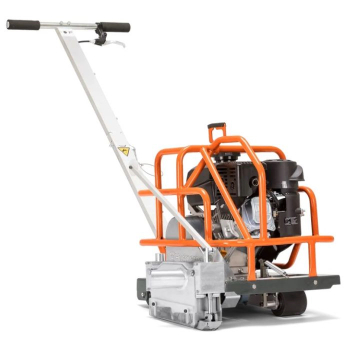

Soff-Cut saws are purpose-built for ultra-early entry; usually within 1-2 hours after finishing. These saws use a unique up-cutting blade system paired with a skid plate that minimizes surface chipping and edge spalling. Because the concrete is still green, traditional saws would cause damage, but the Soff-Cut system allows contractors to get clean, controlled joints almost immediately after finishing. They’re lightweight, portable, and widely used on commercial flatwork or any project requiring fast turnaround.
Walk-Behind Saws – For Slightly Later Cutting Windows


Walk-behind flat saws are more versatile and typically used once the concrete has had a few additional hours to cure. These saws are heavier, more powerful, and use standard down-cutting diamond blades. They can cut deeper and are often used for both joint control and structural or utility cuts. While they’re not ideal for ultra-early entry, many contractors use lighter-duty walk-behind saws within the 4-6 hour window as a practical alternative when Soff-Cut saws aren’t available or required.
Key Differences at a Glance
| Feature | Soff-Cut (e.g., X-150) | Walk-Behind (e.g., FS309, FS400) |
|---|---|---|
| Entry Time | 1–2 hours post-finish | 4–6+ hours post-finish |
| Blade Type | Soff-Cut proprietary | Standard diamond blades |
| Cutting Direction | Up-cut | Down-cut |
| Cut Depth | Shallow (~1.5") | Deep (varies by model) |
| Portability | Very portable | Heavier, more powerful |
| Best For | Crack control, fresh slabs | General cutting, deeper joints |
Choosing the Right Saw Model
With several early entry and walk-behind options available from Husqvarna, it’s important to match the saw to the timing of your cut, the depth required, and the overall demands of the jobsite. Whether you need ultra-early entry capabilities or deeper cuts after initial cure, the table below breaks down the key specifications and use cases for each model to help you make the right choice.
| Saw Model | Entry Timing | Max Cutting Depth | Power Type | Key Features | Best Use Case |
|---|---|---|---|---|---|
| Husqvarna X-150 Soff-Cut | 1–2 hours after finishing | ~1.5" | Gas | Ultra-early entry; up-cut blade with skid plate; minimal spalling | Commercial slabs, tilt-up panels, early joint control |
| Husqvarna FS309 | 4–8 hours after finishing | 4.9" | Gas | Compact walk-behind; portable; good for smaller early entry jobs | Indoor slabs, decorative cuts, standard early-entry joints |
| Husqvarna FS400 | 6+ hours after finishing | 7.5" | Gas | Manual push; well-balanced for mid-depth cuts | Sidewalks, deeper joints, general cutting after set |
| Husqvarna FS513 | 6+ hours after finishing | 7" | Gas (Self-Propelled) | Self-propelled with increased cutting precision and productivity | Medium to large slabs, commercial flatwork, deeper cuts |
| Husqvarna FS524 | 6+ hours after finishing | 9.7" | Gas (Self-Propelled) | Heavy-duty, high production output, deep cutting capability | Large commercial slabs, expansion joints, structural cuts |
Both Soff-Cut and walk-behind saws serve important roles in early entry concrete cutting, but their timing, performance, and blade requirements differ significantly. If you're making control joints within the first few hours after finishing, a Soff-Cut saw like the X-150 is your best option. For deeper or later cuts, models like the FS309 or FS524 offer more power and flexibility.































